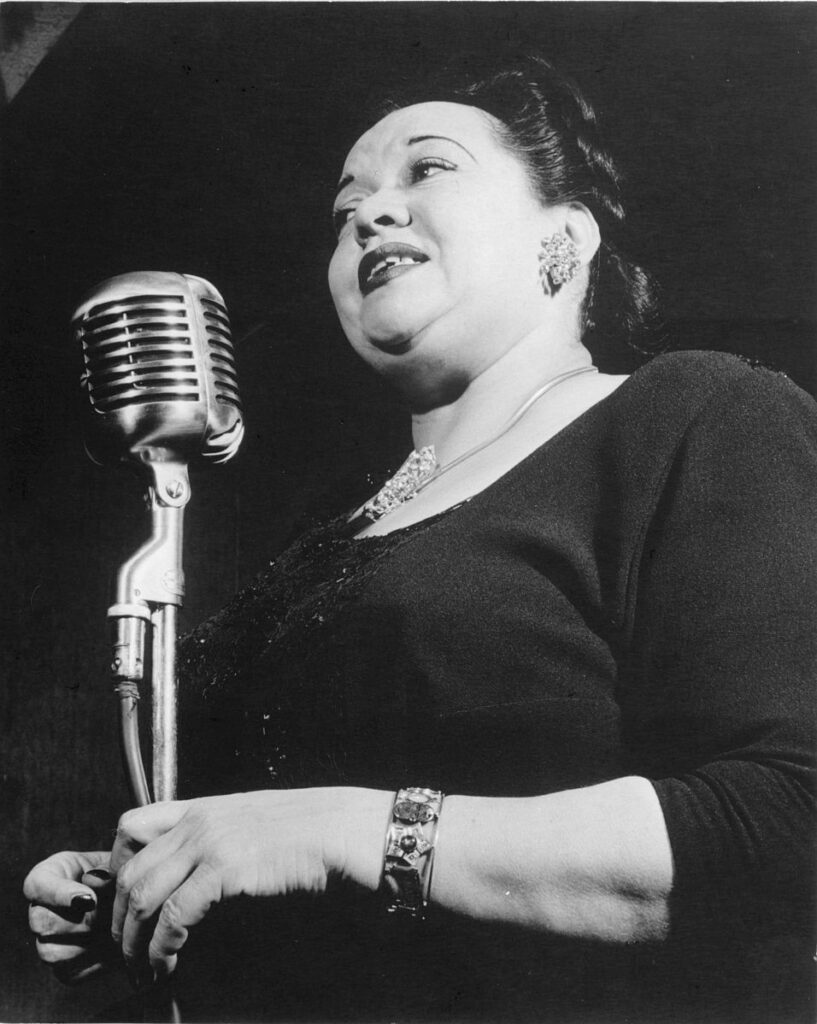How To Celebrate the Great Mildred Bailey? Start by Catching Daryl Sherman at Birdland
Sherman has felt enough of a spiritual kinship with the legendary lady to have recorded two albums and performed innumerable shows in her honor.

Daryl Sherman
“Born To Swing: Celebrating Mildred Bailey”
Birdland, April 16
There are all kinds of reasons to celebrate Mildred Bailey, as the pianist and singer Daryl Sherman is doing Tuesday at Birdland. Some are connected to gender, some are connected to ethnic identity, and some are connected to historical specificity.
Bailey was the first significant female band vocalist — that is to say, the first woman to tour as a featured singer with a major big band, when she appeared with Paul Whiteman’s Orchestra circa 1930 to 1932. Then, a few years later, Bailey was one of the few female musicians to essentially co-lead her own very popular big band, when she and husband Red Norvo were known as “Mr. and Mrs. Swing” and jointly fronted one of the most significant — in the estimation of Duke Ellington among many others — bands of the swing era.
She’s also viewed as a champion of Native American empowerment, in that she was a member of the Coeur d’Alene nation, making her one of the most famous indigenous Americans of her time. That aspect of her story seems particularly relevant these days, in that an Academy Award-nominated actor, Lily Gladstone, has expressed interest in a Bailey biopic; how terrific would it be if Martin Scorsese stepped in to direct?
Mildred Bailey may have also been the most popular female jazz singer of the 1930s. Later on, she’d be overtaken in the collective memory by two younger artists, Ella Fitzgerald and Billie Holiday, but in the years leading up to World War II, Bailey was constantly broadcasting, touring, and recording.
She was the no. 1 jazz vocalist at the height of the great years of the American songbook, when all the greats — the Gershwins, Rodgers & Hart, Cole Porter, Irving Berlin, Fields & McHugh — were writing their best songs. Few of those iconic numbers were written specifically for her, though she did introduce several Hoagy Carmichael classics, like “Georgia on My Mind” and “Rockin’ Chair,” but she was among the first to record more future standards than almost anybody.

Still, I would say that the main reason to remember Mildred Bailey is that she was amazing — a fantastic musician with style and subtlety to spare, who excelled at ballads, or as they called them in her day, torch tunes, as well as uptempo and rhythm numbers.
Bailey died at 51 — we think — and didn’t live long enough to make a long-playing album. She was never documented, alas, on film or television. Yet her influence survives in the memory of those who grew up listening to her. Both Rosemary Clooney and Tony Bennett told me that they considered themselves acolytes of Bailey, and Tony made a point to make sure that his daughter, Antonia, an aspiring jazz singer, paid close attention to her.
Daryl Sherman is the perfect artist to celebrate Bailey; she’s felt enough of a spiritual kinship with the legendary lady to have recorded two albums, the 1996 “Celebrating Mildred Bailey And Red Norvo” and the 2002 “Born to Swing,” and performed innumerable shows in her honor. She is nearing the close of a two-week run at Birdland accompanied by saxophonist Loren Schoenberg, who also occasionally spells Ms. Sherman at the piano, guitarist James Chirillo, and bassist Boots Maleson.
Ms. Sherman began with “Born to Swing,” a 1938 number by a swing era character, Henry Nemo, which no less than “Rockin’ Chair’ could have been Bailey’s theme song. The ensemble alternated between well-known jazz standards — like “Georgia” and “Rockin’ Chair” and two by Fats Waller, “Squeeze Me,” in which Mr. Chirillo eloquently squeezed out the notes on his guitar, and “Honeysuckle Rose,” which featured Mr. Maleson — and lesser-known numbers associated specifically with Bailey.
Among the latter were “I Go For That,” in which Ms. Sherman, following in Bailey’s high-heeled footsteps, captured the goofy charm of Frank Loesser’s witty lyric: “You play the uke / you’re from Dubuque….” She also reanimated a pair of rarely heard texts by Johnny Mercer, “Bob White (What’Cha Gonna Swing Tonight?)” and “Arthur Murray Taught Me Dancing in a Hurry.” The latter, a very involved story song, illustrates that Bailey could also be supremely funny and was a master storyteller.
Julia Rinker, Bailey’s niece, the daughter of her younger brother Al Rinker — he had been Bing Crosby’s original musical partner before becoming a songwriter — served as a very memorable guest on the first show. In addition to talking about her father and her aunt, Ms. Rinker sang one of their most memorable numbers, “You Started Something,” a very touching ballad from 1947 that immediately became a favorite of Rosemary Clooney’s.
Bailey is so underappreciated these days that there’s not even any consensus on her birth date; most sources claim 1907, though “The Syncopated Times” says 1900, which is more likely. Here’s hoping that Ms. Sherman’s Birdland show — and if all goes well Ms. Gladstone’s forthcoming film — will start to correct that.
The opening set ended with “Thanks for the Memory,” which Bailey made into a jazz standard long before Bob Hope completely co-opted it; indeed, for reviving our memories of a quintessential American artist, gratitude is the only appropriate response.

